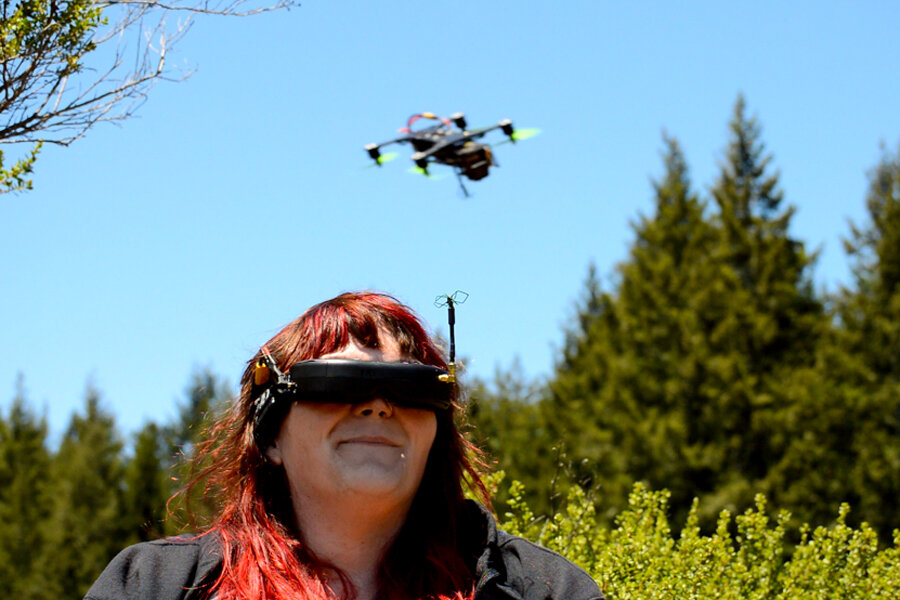Drone racing championship attracts experts in first-person flying
Loading...
Quadcopter drones have gotten some notoriety in the news recently. Amazon wants to use them to deliver small packages. California fire fighters complained that they couldn't drop water on a wildfire because too many quadcopters were flying over the blaze. One amateur pilot even landed a drone on the lawn of the White House. Yet, the vast majority of remote-controlled (RC) drone operators are flying safely and truly just for fun.
Last week, the California State Fair held the first US national championship for drone racing. Most of the vehicles – often called "rigs" by the pilots – were the classic four-propeller quadcopters that have become the norm for most amateur drones. However, while no competing rig could exceed 13 inches from motor to motor, a wide range of sizes and styles graced the field in different competitions of first-person-view (FPV) racing and free-style stunt flying.
“It really was a magical event,” says Zoe Stumbaugh of Santa Cruz, Calif., one of only two women competitors in the 100-person field. “The racing was secondary to meeting the amazing people that gathered to make it all happen."
Drone racers find each other through YouTube videos, personal websites, and online forums. The community of quadcopter pilots shares everything from repair advice to the latest videos of high speeds and acrobatic feats. So, it wasn’t just Ms. Stumbaugh who was a bit starstruck by the other participants. Even competition champion Chad Nowak of Brisbane, Australia, told Tested that winning had not been first on his mind when coming to the competition; it was meeting the other standouts in this emerging sport.
Unlike many other RC vehicles, these drones are controlled similarly to a video game. Operators don’t fly by watching their drone in the sky. They navigate while looking into virtual-reality goggles at a wireless feed from a video camera mounted on their rig. That feed can also be seen by the spectators on the huge TV screens or on their own goggles. For Stumbaugh, the experience of flying a drone via virtual reality is, “like being a Buddhist monk and having an out-of-body experience.”
With next year’s national competition already in the planning – and rumors about NASA holding an event of its own – the technology for drone racing is likely to advance quickly.
“The next thing we need in the sport is HD capability in our cameras and goggles,” says Stumbaugh. “That one advancement would make our sport worthy of being broadcast on TV.”
Stumbaugh says she is already working to put together a team of women competitors for next year’s event. “I’ve been talking to other women operators, and they’re excited to get involved.”
But more than bringing in more women, Stumbaugh really just wants to see everyone try flying FPV drones. “When people understand the sport, their fears about privacy and safety fall away," she says. "They realize we’re out here to have fun, and that’s it.”





